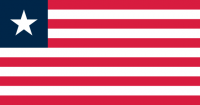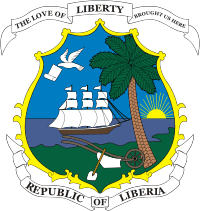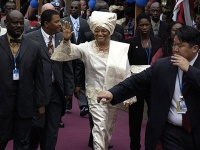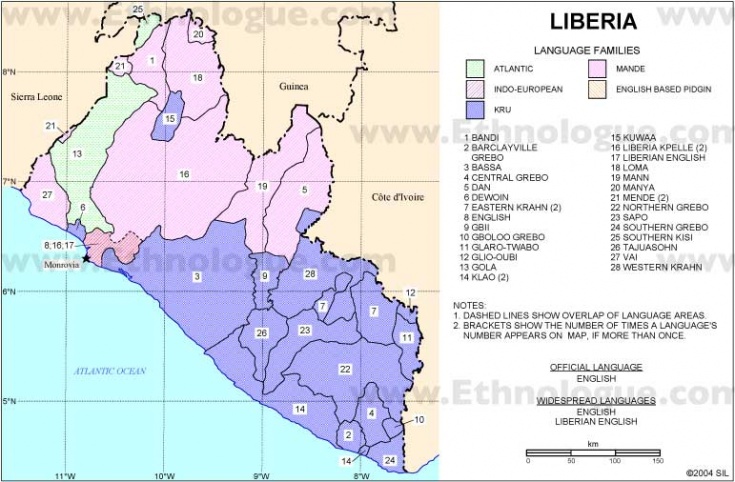Liberia
From The Peopling of New York City
Contents |
Location
Liberia is located in West Africa, on the Atlantic Ocean coast. Liberia is bounded on the north by Sierra Leone and Guinea, on the east by Côte d’Ivoire, and on the south and west by the Atlantic Ocean. It occupies an area of 43,000 square miles; to put that into perspective, the state of Virginia is 42,774 square miles.
Demographics
Population: 3,193,942
Population growth rate: 3.661%
Infant mortality rate: 143.89 deaths/1,000 live births
Sex ratio: 0.99 male/female
- HIV/AIDS (adult prevalence rate): 5.9%
- HIV/AIDS (people living with HIV/AIDS): 100,000
- HIV/AIDS (deaths): 7,200
Religions: Christian 40%, Muslim 20%, indigenous beliefs 40%
- Literacy (age 15 and over can read and write): total population: 57.5% ; male: 73.3% ; female: 41.6%
arrow denotes estimated information, 2003. All other information estimated as of 2008.
History and Government
Liberia owes its establishment to the American Colonization Society, founded in 1816 to resettle freed American slaves in Africa. Attempts at colonization in Sierra Leone had failed in 1815. Six years later native rulers granted a tract of land on Cape Mesurado, at the mouth of the St. Paul River, to U.S. representatives, and the first Americo-Liberians, led by Jehudi Ashmun, began the settlement. In 1824 an American agent for the society, Ralph Randolph Gurley, named the new colony Liberia and the Cape Mesurado settlement Monrovia. Other separate settlements were established along the coast during the next 20 years. Soon, however, conflicts arose between the settlers and the society in the United States. By the time Joseph Jenkins Roberts became the first black governor in 1841, the decision had been made to give the colonists almost full control of the government. A constitution (modeled on that of the United States') was drawn up, and Liberia became an independent republic in July 26, 1847. Roberts was its first president, serving until 1856. Liberia was recognized by Britain in 1848, by France in 1852, and by the United States in 1862.
The Republic of Liberia's government includes the three traditional branches, each of which is theoretically equal in its powers of checks on the other branches. Frequently, however, the the executive branch (i.e., the President of Liberia) exercises a greater deal of power than do either the Legislative or Judicial branches.
The legislative branch is divided into two houses in the same manner as the United States; there's an House of Representatives that consists of 64 popularly elected members, each of whom serves a 6-year term. There's also a Senate, consisting of 2 popularly elected members from each administrative district, with a grand total of 15 districts, and 30 senators. The executive branch consists of a president and his or her cabinet. The cabinet, like in the United States, is nominated by the president and approved by the senate. The judicial branch, as in the United States, consists of a Supreme Court, with similar powers to the American court.
More recently, civil war has plagued the country from 1989 til 1996, forcing many Liberians to relocate or leave the country. Many have died or were wounded, and this violence was also a reason for emigration to the United States. Liberian Civil Wars
Religion and Language
About 43 percent of Liberia’s people follow traditional animist religions. About 29 percent are Christians (most Protestants) and 16 percent are Muslims. English is Liberia’s official language but is spoken by only about one-fifth of the people (no language reaches more than 20% of the population). The rest of the people speak various African languages which mainly belong to the Mande, West Atlantic, or Kwa linguistic groups.
There are 28 different languages/dialects spoken in the country of Liberia in Africa. The Kpelle language is spoken by 480,000 people. Bassa is spoken by over 350,000 people. Some other tribal languages spoken on a regular basis aside from Kpelle and Bassa are Pidgin-English, Mano, and Dan
References
[1][CIA World Factbook]- https://www.cia.gov/library/publications/the-world-factbook/geos/li.html#People
[2][Language information and maps] http://www.ethnologue.com/show_map.asp?name=LR&seq=10



